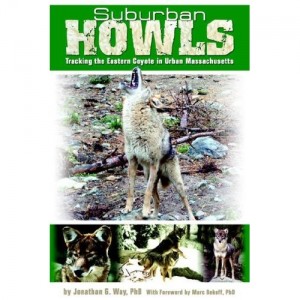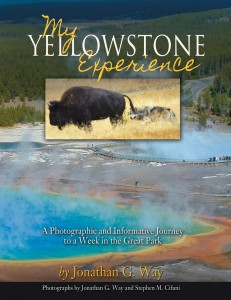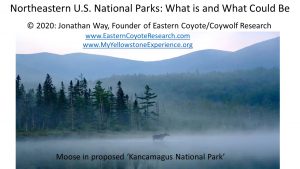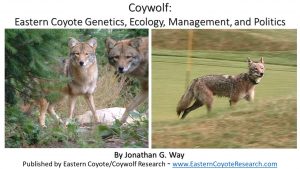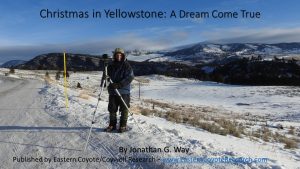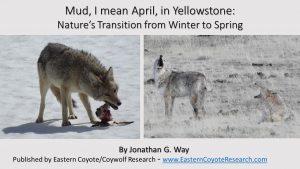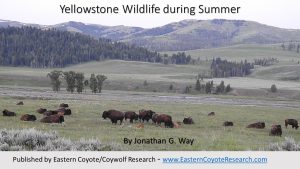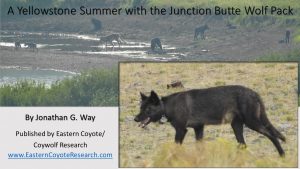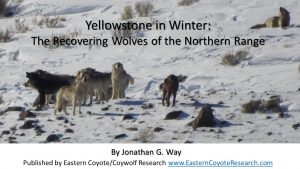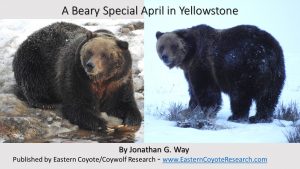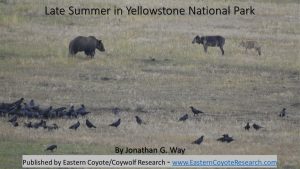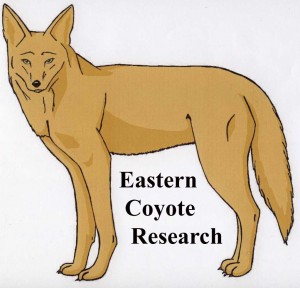The following response (below) is my response to the two editorials (click here for first and second articles) from the New York Times on Wolf Delisting and my response to the New York Times about coyotes/coywolves living in their own backyard.
—–
I applaud your article “Victory for Wolves” and how it explains how there should be a robust and dynamic population of wolves in the west and more than hunters should be thought of in the next, revised federal management plan. However, you should realize that the same federal government has essentially denied federal protections for wolves here in the Northeast including recent petitions.
There is more and more evidence that the eastern coyote, which is a coyote x red/eastern wolf hybrid that could by called a coywolf, is very closely related to the original wolf that we had living here in precolonial times. In other words, what was once thought of as the gray wolf living here in the Northeast was probably the eastern or red wolf. State management plans in all Northeastern states essentially allow an unlimited slaughter of eastern coyotes for all or at least half of the year. This is wrong for 3 reasons. One, coywolves are important to the ecology of the area and should be allowed to live at natural, not human caused densities. Two, coywolves (and wolves) are social, sentient, and intelligent animals that should be treated like a valuable member of the natural community, not managed for hate which essentially modern regulations allow. Three, the current management of coywolves (eastern coyotes) here in the Northeast just about guarantees that non-hybridized wolves making it here from southern Canada will be killed.
It is only just for the NY Times to advocate for animals close to home (including sometimes in Central Park!) just as it is important for wolves in the Rockies.
Jonathan Way
Cape Cod, MA

About Jonathan Way
Jonathan (Jon) Way has a B.S. (UMass Amherst), M.S. (UConn Storrs), and doctorate (Boston College) related to the study of eastern coyotes/coywolves. He is the author of the following books: 1) Suburban Howls, an account of his experiences studying eastern coyotes in Massachusetts; 2) My Yellowstone Experience, which details - in full color - the spectacular wildlife, scenery, and hydrothermal features that can be found in the world's first national park; 3) Northeastern U.S. National Parks: What Is and What Could Be makes the case to expand the National Park System in the Northeast by adding 3 new national parks that are 44,000 acres or bigger; 4) The Trip of a Lifetime: A Pictorial Diary of My Journey Out West consists of 560 pages and nearly 1,000 pictures of a 3.5 week trip out west in 2019, showcasing most of the large mammals found in North America; 5) Coywolf: Eastern Coyote Genetics, Ecology, Management, and Politics is a 280 page pictorial treatise of his over 20 years studying this creature; 6) Christmas in Yellowstone is a 200+ page, 259 picture book based on his 9 day trip to the park during the 2020 holiday season; 7) Mud, I mean April, in Yellowstone, which is a 330 page, 430 picture look at the park during the mud season when nature transitions from winter to spring; 8) Yellowstone Wildlife during Summer, which was a major project showing over 650 pictures of the park's amazing wildlife in over a decade of summers spent in the park; 9) A Yellowstone Summer with the Junction Butte Wolf Pack, which details, in 510 pictures, the life and times of a famous wolf pack followed during the summer by adoring fans; 10) Yellowstone in Winter: The Recovering Wolves of the Northern Range, which details, in over 450 pictures, the wildlife of Yellowstone, particular wolves and their prey, during the depths of winter; 11) Backpacking the Iconic Pemigewasset Wilderness, which describes my 3 day, 35 mile journey into the heart of the White Mountains, New Hampshire; 12) A Beary Special April in Yellowstone, which details his week and a half long encounter with a wild grizzly bear; and 13) Late Summer in Yellowstone. Jon founded and runs his organization, Eastern Coyote/Coywolf Research, where his goal is to conduct long-term ecological and behavioral research on eastern coyotes. He also supplements his research with regular trips to Yellowstone National Park and other national parks.
